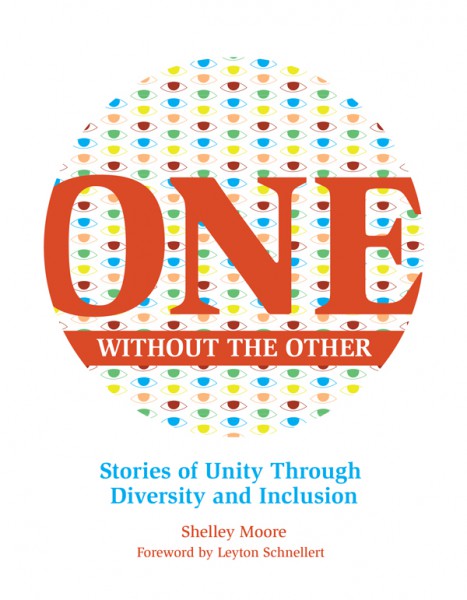 I am THRILLED to announce the release of my first book, “One Without the Other.” The first batch has been shipped and arrived this weekend. I was so excited I opened it right on the street! I also made sure to give my mom the first autograph 🙂
I am THRILLED to announce the release of my first book, “One Without the Other.” The first batch has been shipped and arrived this weekend. I was so excited I opened it right on the street! I also made sure to give my mom the first autograph 🙂
This has been a big year of writing and editing and editing and editing and finally the day has come! My first book release celebration with be in Prince George on Thursday evening, with another planned in Vancouver in the fall.
As an introduction, I have included the introduction! Below is a section of the text to get a sneak peak of the new book. For more information on how to order, there will be links below.
Introduction
I was teaching a course last summer at the University of British Columbia called “Conceptual Foundations of Inclusive Education.” Thirty or so practicing teachers from various subject areas, knowledge expertise, and experience levels from across British Columbia joined me for three weeks of deconstruction, inquiry, and reflection, creating an engaging community of learners. The course was in July, and on this particular day, it was my birthday. We started the class with some cupcakes and hung up “Happy Birthday” bunting across the whiteboard, before diving into our explorations and understanding of the concept driving learning systems all over the world – inclusive education.
I showed a slide to my students with four bubbles. Their job was to label the bubbles with the appropriate terms (inclusion, integration, exclusion, and segregation) based on their own experience and prior knowledge of the concepts.

After some discussion, it was agreed that Bubble C in fact represented inclusion. This is the common consensus arrived at in many groups that I have worked with, both in pre and in-service professional development settings.

After further discussion, however, a student commented, “Shelley, I don’t think that this diagram is inclusion either.” This caught me off guard.
“Of course this is inclusion!” I thought. I have shown this slide to hundreds if not thousands of people! What could she possibly mean?
She further explained, “Look what you have shown us. I see a bubble with a whole bunch of green dots. And then, there are a scattered handful of other coloured dots.”
“Yeah,” I said, “and…”
“Well, in my definition of inclusion, there is no other.”
I stood there speechless, because she was absolutely right. The diagram I was presenting was not one of inclusion; it was an example of the traditional model of education. The model where our goal is to produce more of the same – lingering evidence of the factory model of education where we needed to produce and replicate people to meet the demand of the workforce during the industrial revolution (Robinson, 2009; Zhao, 2009). A model where our job as educators (and especially special educators) was to identify students who aren’t green and fix them. Send the red kids to the red teacher, the blue kids to the blue teacher and the yellow kids to the yellow teacher. This model of education is a deficit, medical model, and I was showing the class a perfect example of how it was still plaguing us today. But more and more kids are coming to us not green! Not only is this model less effective, but also we are running out of funding, supports and students to allow this model to continue. Some have met this shift in paradigm with panic – others are seeing it as an opportunity. An overdue shift to starting to match our goals of education to the goals and expectations needed to meet the current demands of our society –which does no longer want people to comply. This is especially true now, as more and more occupations involving compliance and replication, are being replaced by machines (Zhao, 2009).
Educational reforms are happening on a global scale, including British Columbia and other provinces in Canada, where the Ministries of Education are completely restructuring their curriculum, being designed and written by teachers for teachers, with the emphasis on moving away from classrooms of green students (BC Ministry of Education 2015). We are no longer living in the industrial revolution; this is the 21st century — where we need to value the strengths rather than deficits in learning. Rather than finding out why students aren’t green, our job is now to find out what their colour is. What do they bring? What can they contribute because of their diverse and unique expertise? For decades we have been trying to take this “colour” out of our of students, taking the special out of special education, the autistic out of autism, the language out of cultures, and especially, the indigenous out of First Nations, Metis and Inuit children. This is not teaching to diversity. This is not inclusive. Teaching to diversity and inclusion is where we value the characteristics that ARE diverse, and not try and homogenize them.
The class continued to discuss what the conceptual diagram of inclusion could be, and together we decided that the only way to ensure there was no “other” was not to make us all green, but instead to make as all “an other” (see figure 3).

When looking at inclusion this way, it also helped us realize that this is no longer a idea specific to special education. There is a distinct gap between the silos of special education and curriculum (Pugach & Warger, 2001; Thomas & Loxley, 2007), but if we look at inclusion as a concept of teaching to the diversity of all, rather than just a special education initiative, we can bridge this gap. We are diverse, all of us. We all have strengths, we all have stretches, and we all need to get better at something. The difference in teaching to diversity, however, is that we don’t start with our deficits; we start with our strengths, and this includes students, teachers, support staff, custodians, bus drivers and parents. My good friend Leyton Schnellert refers to this collective as “the ecology of learning communities.” Inclusive education relies on the diversity of its ecosystem, to not only promote coexistence and tolerance, but to thrive on the learning and interaction of each person in the community
Through this discussion, I also realized that, if we can now extend inclusive education to include every diverse learner, then we also can also start to view inclusion as not something we simply do; instead it becomes something that just is. We cannot escape or avoid the diversity in our world by attempting to homogenize and standardize our classrooms and learners. Homogeneity is a battle that has never been won and never will. Civilizations have collapsed in their attempt to make everyone the same (Morris, 2013). This is no longer our vision of education (thank goodness) and we are long overdue in matching our vision to our practices in classrooms, schools and communities.
It was also on this particular day, that I was inspired to write this book, because it was on this day I realized that, if inclusion and diversity is something that just is, then it is also something we live, something we are, and something we believe in together. And it is through this common goal that we can also be unified: we can be one without being an other.
So please allow me to introduce to you “One without the Other.”

One Without the Other is available from:


 Last October I was invited, by the lovely Maria LaRose, to present for the Dalai Lama Centre’s Heart Mind Conference complete with a slate of speakers that left me speechless including Kim Schonert-Reichl, Deborah MacNamara, Peter Senge and others. We were brought together to speak to the changing tide of technology and our role as digital citizens, and what emerged was a collection of stories and perspectives that cradled our hearts and challenged our minds.
Last October I was invited, by the lovely Maria LaRose, to present for the Dalai Lama Centre’s Heart Mind Conference complete with a slate of speakers that left me speechless including Kim Schonert-Reichl, Deborah MacNamara, Peter Senge and others. We were brought together to speak to the changing tide of technology and our role as digital citizens, and what emerged was a collection of stories and perspectives that cradled our hearts and challenged our minds.

